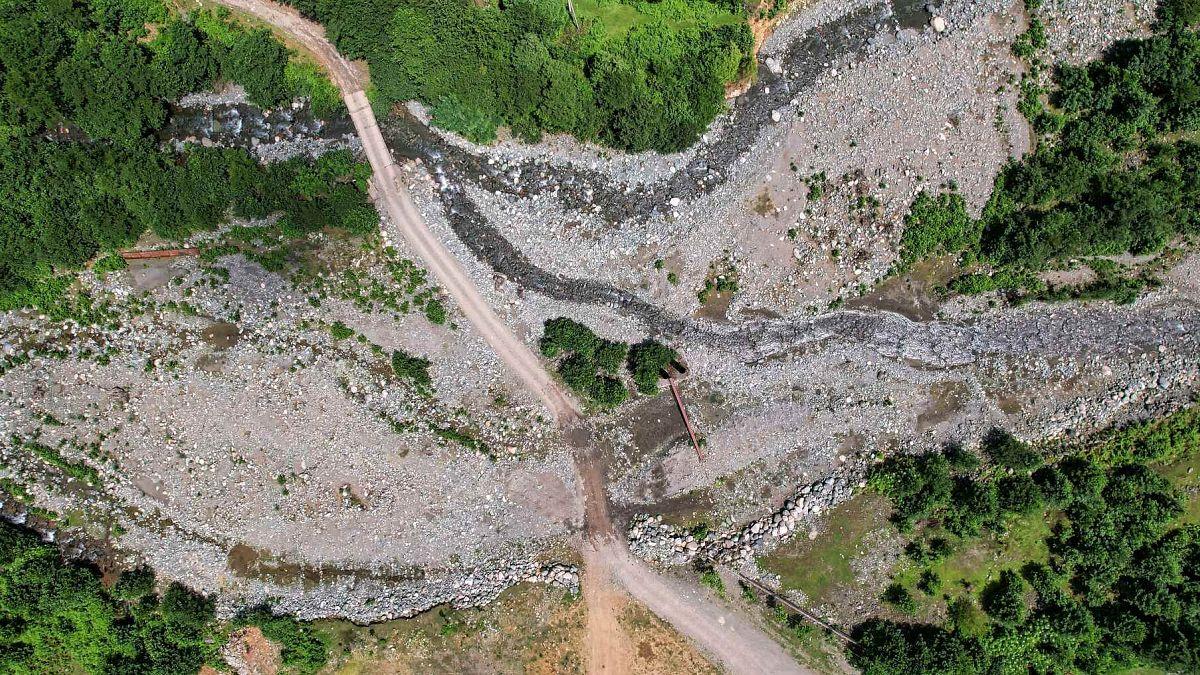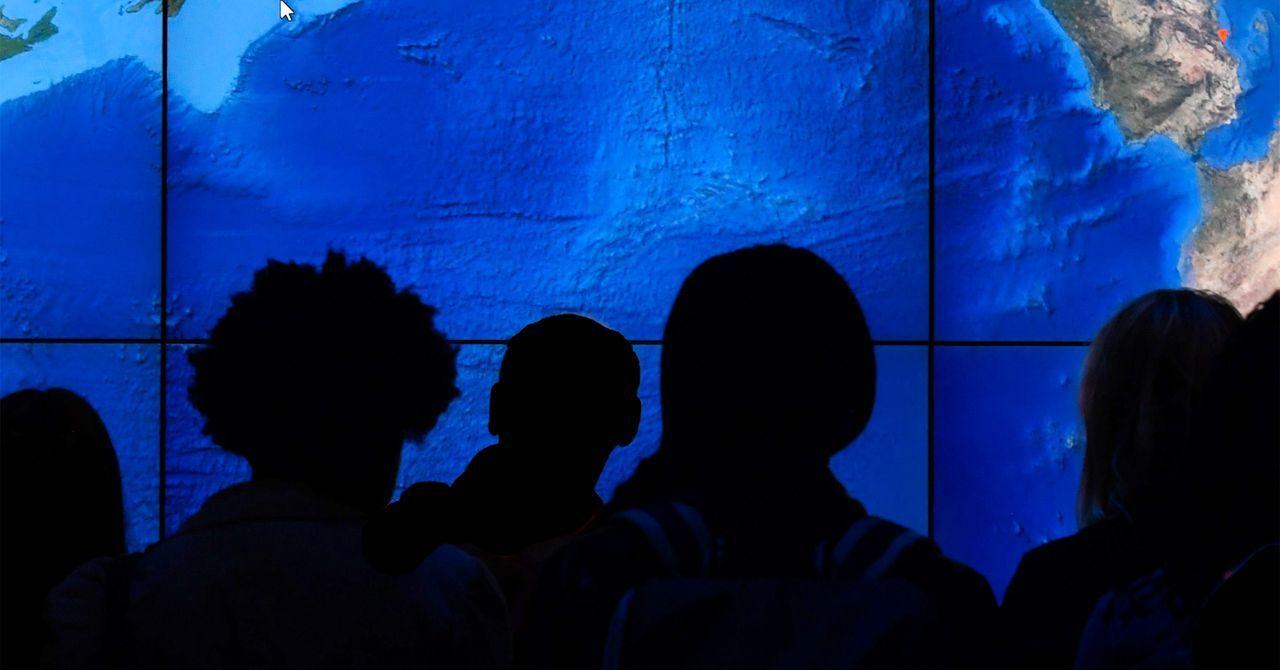AI Accelerates Landslide Detection for Rapid Disaster Response
2 Sources
2 Sources
[1]
Researchers use AI to identify landslides and target disaster response
Researchers from the University of Cambridge are using AI to speed up landslide detection following major earthquakes and extreme rainfall events -- buying valuable time to coordinate relief efforts and reduce humanitarian impacts. On April 3, 2024, a magnitude 7.4 quake -- Taiwan's strongest in 25 years -- shook the country's eastern coast. Stringent building codes spared most structures, but mountainous and remote villages were devastated by landslides. When disasters affect large and inaccessible areas, responders often turn to satellite images to pinpoint affected areas and prioritize relief efforts. But mapping landslides from satellite imagery by eye can be time-intensive, said Lorenzo Nava, who is jointly based at Cambridge's Departments of Earth Sciences and Geography. "In the aftermath of a disaster, time really matters," he said. Using AI, he identified 7,000 landslides after the Taiwan earthquake, and within three hours of the satellite imagery being acquired. Since the Taiwan earthquake, Nava has been developing his AI method alongside an international team. By employing a suite of satellite technologies -- including satellites that can see through clouds and at night -- the researchers hope to enhance AI's landslide detection capabilities. Their study is published in Natural Hazards and Earth System Sciences. Multiplying hazards Triggered by major earthquakes or intense rainfall, landslides are often worsened by human activities such as deforestation and construction on unstable slopes. In certain environments, they can trigger additional hazards such as fast-moving debris flows or severe flooding, compounding their destructive impact. Nava's work fits into a larger effort at Cambridge to understand how landslides and other hazards can set off cascading "multihazard" chains. The CoMHaz group, led by Maximillian Van Wyk de Vries, Professor of Natural Hazards in the Departments of Geography and Earth Sciences, draws on information from satellite imagery, computer modeling and fieldwork to locate landslides, understand why they happen and ultimately predict their occurrence. They're also working with communities to raise landslide awareness. In Nepal, Nava and Van Wyk de Vries teamed up with local scientists and the Climate and Disaster Resilience in Nepal (CDRIN) consortium to pilot an early warning system for Butwal, which sits beneath a massive unstable slope. Improved AI-detection Nava is training AI to identify landslides in two types of satellite images -- optical images of the ground surface and radar data, the latter of which can penetrate cloud cover and even acquire images at night. Radar images can, however, be difficult to interpret, as they use grayscale to depict contrasting surface properties and landscape features can also appear distorted. These challenges make radar data well-suited for AI-assisted analysis, helping extract features that may otherwise go unnoticed. By combining the cloud-penetrating capabilities of radar with the fidelity of optical images, Nava hopes to build an AI-powered model that can accurately spot landslides even in poor weather conditions. His trial following the 2024 Taiwan earthquake showed promise, detecting thousands of landslides that would otherwise go unnoticed beneath cloud cover. But Nava acknowledges that there is still more work needed, both to improve the model's accuracy and its transparency. He wants to build trust in the model and ensure its outputs are interpretable and actionable by decision-makers. "Very often, the decision-makers are not the ones who developed the algorithm," said Nava. "AI can feel like a black box. Its internal logic is not always transparent, and that can make people hesitant to act on its outputs. "It's important to make it easier for end users to evaluate the quality of AI-generated information before incorporating it into important decisions." This is something he is now addressing as part of a broader partnership with the European Space Agency (ESA), the World Meteorological Organization (WMO), the International Telecommunication Union's AI for Good Foundation and Global Initiative on Resilience to Natural Hazards through AI Solutions. At a recent working group meeting at the ESA Center for Earth Observation in Italy, the researchers launched a data-science challenge to crowdsource efforts to improve the model. "We're opening this up and looking for help from the wider coding community," said Nava. Beyond improving the model's functionality, Nava says the goal is to incorporate features that explain its reasoning -- potentially using visualizations such as maps that show the likelihood of an image containing landslides to help end users understand the outputs. "In high-stakes scenarios like disaster response, trust in AI-generated results is crucial. Through this challenge, we aim to bring transparency to the model's decision-making process, empowering decision-makers on the ground to act with confidence and speed."
[2]
How AI is speeding up disaster response after earthquakes and storms
The researchers' AI flagged more than 7,000 landslides within just three hours following an earthquake last year. As extreme weather becomes more frequent, researchers are turning to artificial intelligence in an effort to better understand and respond to climate-fuelled disasters. After a 7.4-magnitude earthquake struck just outside Hualien in Taiwan in April 2024 - the strongest in the country in 25 years - thousands of landslides devastated remote mountain communities. To assess damage, emergency teams often rely on satellite images to spot affected areas. But manually scanning these images can take hours or even days. Geoscientists at the University of Cambridge think they have a tool to change that. They are training AI to detect landslides and help rescue teams act faster. "In the aftermath of a disaster, time really matters," Lorenzo Nava, a research associate in the university's departments of earth sciences and geography, said in a statement. The team is working to build AI models that can automatically identify landslides in satellite images, even when cloud cover or darkness makes it hard to see them. The effort is part of CoMHaz, a Cambridge research group focused on cascading and multi-hazard disasters, where one event triggers another or multiple events occur at once. By combining standard optical imagery with radar data, which can penetrate clouds and work at night, the researchers hope to make their detection models faster and more reliable in crisis situations. Following the Hualien quake, their system flagged over 7,000 landslides within just three hours of receiving satellite imagery, according to a recent study they published in Natural Hazards and Earth System Sciences. The same process would have taken far longer if done manually. The team hopes this technology will help first responders prioritise areas in urgent need of assistance, especially in remote or mountainous regions where timing is critical. Eventually, they believe it could predict landslides before they happen. Europe has faced wave after wave of climate-driven disasters in the past year. In Switzerland, a glacier collapse in May triggered a deadly landslide that engulfed a small alpine village. Before that, flash floods in Valencia killed several people after record-breaking rainfall overwhelmed the city's infrastructure. And across Southern Europe, heatwaves, fires and floods are hitting with increasing intensity. Scientists say climate change is not only fuelling the severity of these events - it is also exposing weaknesses in disaster response systems. Landslides, for example, are being worsened by heavy rainfall, deforestation and rising temperatures that make slopes more unstable. AI may not be a cure-all, but it could offer much-needed support. Tools like the ones developed by the Cambridge team are designed to prioritise resources, identify hard-hit areas faster and, in some cases, support early warnings. Now, Nava and Maximillian Van Wyk de Vries, a professor of natural hazards at Cambridge and head of the CoMHaz group, are working with local scientists in Nepal to pilot an AI-supported early warning system in Butwal, a town vulnerable to landslides. Speed isn't the only goal. The researchers are also designing their models to show why they detect certain features. They hope that will help disaster response teams and local decision-makers trust the AI recommendations they receive. And perhaps help local communities have better response plans for worst-case scenarios. To improve their system, the Cambridge team has joined forces with the European Space Agency, the World Meteorological Organisation and other partners. They also launched a data science challenge to refine their AI model and make its results more transparent. After earthquakes or major storms, the researchers say, better information can save lives. "It's important to make it easier for end users to evaluate the quality of AI-generated information before incorporating it into important decisions," said Nava. "In high-stakes scenarios like disaster response, trust in AI-generated results is crucial."
Share
Share
Copy Link
Researchers from the University of Cambridge are using AI to quickly identify landslides following major earthquakes and extreme rainfall events, significantly improving disaster response times and potentially saving lives.
AI-Powered Landslide Detection Revolutionizes Disaster Response
In a groundbreaking development, researchers from the University of Cambridge are harnessing the power of artificial intelligence (AI) to dramatically accelerate landslide detection following major earthquakes and extreme rainfall events. This innovative approach is set to transform disaster response efforts, potentially saving countless lives in the process
1
.The Taiwan Earthquake: A Case Study in AI Efficiency

Source: Euronews
The effectiveness of this AI-driven method was demonstrated following a magnitude 7.4 earthquake that struck Taiwan's eastern coast on April 3, 2024. In the aftermath of this disaster, Lorenzo Nava, a researcher jointly based at Cambridge's Departments of Earth Sciences and Geography, utilized AI to identify an astounding 7,000 landslides within just three hours of acquiring satellite imagery
1
.This rapid detection capability is crucial in disaster scenarios where time is of the essence. Traditional methods of manually mapping landslides from satellite imagery can be extremely time-consuming, potentially delaying critical relief efforts
2
.Enhancing AI Capabilities Through Multi-Satellite Technology
Nava and his international team are now working to further enhance the AI's landslide detection capabilities. Their approach involves employing a suite of satellite technologies, including those capable of penetrating cloud cover and operating at night
1
.The researchers are training AI to identify landslides in two types of satellite images:
- Optical images of the ground surface
- Radar data, which can penetrate cloud cover and acquire images at night
By combining these technologies, the team aims to create an AI-powered model that can accurately detect landslides even in poor weather conditions, addressing a significant limitation of current detection methods
1
.Addressing the Challenges of AI Implementation
While the potential of AI in disaster response is immense, the researchers acknowledge that challenges remain. Nava emphasizes the importance of improving the model's accuracy and transparency to build trust among decision-makers who may be hesitant to act on AI-generated outputs
1
.To address these concerns, the team is working on incorporating features that explain the AI's reasoning, potentially using visualizations such as maps that show the likelihood of an image containing landslides. This approach aims to make the AI's decision-making process more transparent and understandable to end-users
1
.Related Stories
International Collaboration and Future Prospects
The Cambridge team has joined forces with several international organizations, including the European Space Agency (ESA), the World Meteorological Organization (WMO), and the International Telecommunication Union's AI for Good Foundation. This collaboration aims to further refine the AI model and increase its transparency
2
.As part of this effort, the researchers have launched a data-science challenge to crowdsource improvements to the model. This initiative not only seeks to enhance the model's functionality but also aims to incorporate features that explain its reasoning, thereby increasing trust in AI-generated results
1
.
Source: Phys.org
Practical Applications and Community Engagement
Beyond theoretical research, the team is actively working to implement their findings in real-world scenarios. In Nepal, Nava and his colleagues are collaborating with local scientists and the Climate and Disaster Resilience in Nepal (CDRIN) consortium to pilot an early warning system for Butwal, a town situated beneath a massive unstable slope
1
.This project exemplifies the potential of AI-driven disaster response systems to not only detect hazards but also to predict and potentially prevent them, marking a significant step forward in disaster mitigation efforts.
References
Summarized by
Navi
Related Stories
Recent Highlights
1
Grok generates sexualized images of minors and women as X blames users, not the AI model
Policy and Regulation

2
Nvidia launches Vera Rubin platform at CES 2026, promising 10x cost reduction for AI computing
Technology

3
OpenAI launches ChatGPT Health as 230 million users seek AI-generated health advice each week
Technology








